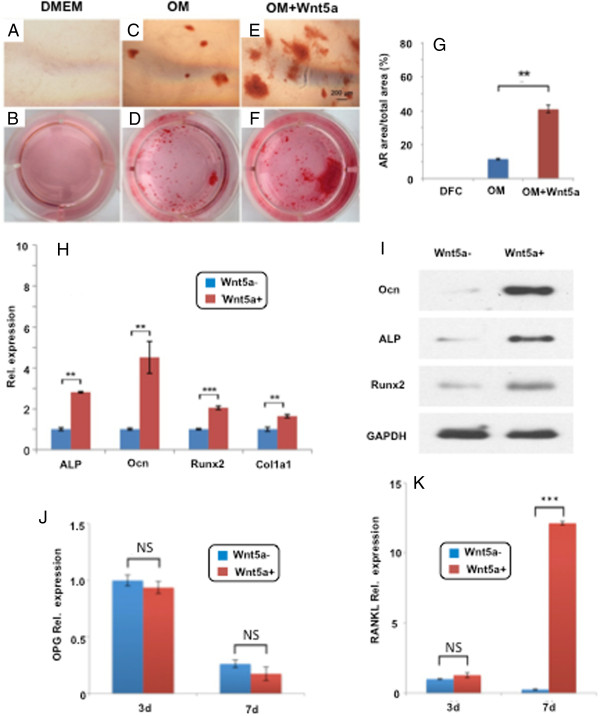Figure 3.

Dental follicle stem/progenitor cell differentiation upon Wnt5a protein exposure. (A, B) Dental follicle stem/progenitor cells showed virtually no alizarin red area upon exposure to Dulbecco’s modified Eagle’s medium (DMEM) without osteogenic supplements for the tested 14 days. (C, D) Dental follicle stem/progenitor cells exposed to osteogenic medium (OM) yielded a moderate alizarin red area. (E, F) Dental follicle stem/progenitor cells upon exposure to both Wnt5a protein (300 ng/ml) and osteogenic medium generated some alizarin red area. (G) Quantitatively, dental follicle stem/progenitor cells upon exposure to Wnt5a protein and osteogenic medium showed significantly greater alizarin red (AR) area than Wnt5a exposure alone, which in turn was more significant than wild-type dental follicle cells (DFC; n = 3; **P <0.01). (H) Real-time quantitative PCR (Taqman) revealed alkaline phosphatase (ALP), osteocalcin (Ocn), Runx2 and Col1a1 mRNA expression upon Wnt5a protein exposure for 7 days (n = 3; **P <0.01). (I) ALP, Ocn and Runx2 protein expression as treated with Wnt5a protein for 7 days. (J, K) Osteoprotegerin (OPG) and receptor activator for nuclear factor-κB ligand (RANKL) mRNA expression when dental follicle stem/progenitor cells were exposed to Wnt5a protein for 3 and 7 days. GAPDH, glyceraldehyde-3-phosphate dehydrogenase; NS, not significant; ***(P <0.01).
